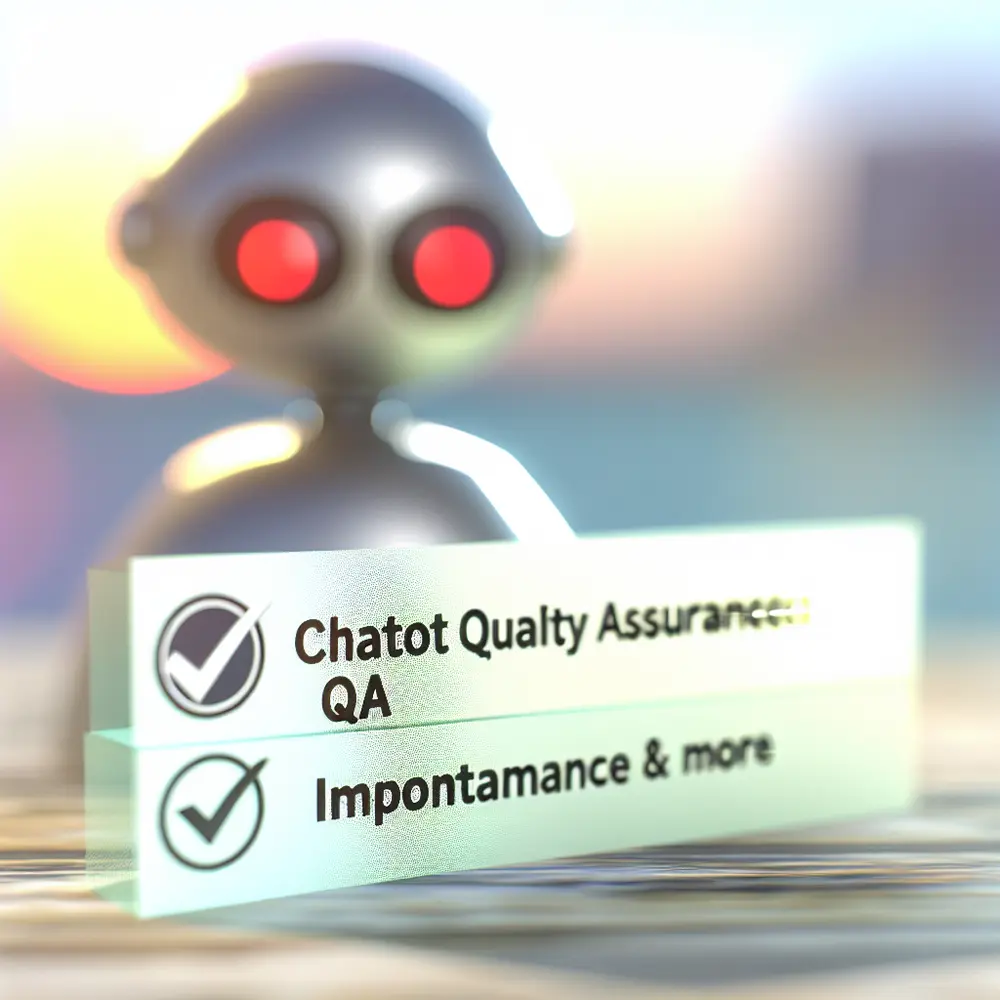Are you grappling with the challenges of ensuring optimal performance for your chatbot? In today’s fast-paced business environment, effective chatbot quality assurance (QA) becomes essential. Chatbots play a critical role in customer interaction, and organizations must ensure they function seamlessly to meet user demands.
Moreover, as reliance on conversational AI grows, customers expect quick, accurate, and meaningful responses. Understanding and addressing user pain points has never been more important. Without a solid QA strategy, you risk damaging brand reputation and losing user trust.
This article delves into the significance of Chatbot QA, exploring the methods that can elevate your chatbot’s performance while enhancing user satisfaction. You’ll uncover common pain points, essential metrics, and best practices to guide your testing efforts.
What is Chatbot Quality Assurance (QA)?
Chatbot Quality Assurance (QA) refers to systematic processes that you implement to ensure chatbots operate at optimal performance levels. Use a series of tests and evaluations to identify issues in functionality, user experience, and capabilities of conversational AI. By establishing a robust QA strategy, you significantly enhance the effectiveness of your chatbot solutions.
“After implementing a rigorous QA process, we saw a dramatic improvement in our chatbot’s performance, resulting in higher customer satisfaction.” – Sarah, QA Manager at Tech Innovations
The importance of Chatbot QA lies in its ability to improve user satisfaction. Effective testing ensures that chatbots respond accurately to inquiries, provide relevant information, and maintain a natural conversation flow. Performance metrics, such as response times and accuracy rates, become crucial here, allowing you to measure user retention and identify areas needing improvement.
Consider a case study with the company HelpDesk Pro, which implemented a structured QA process for their chatbot. As a result, they observed a 30% increase in user satisfaction scores after enhancing their response accuracy and reducing response times by 25%.
Further aspects of testing encompass script accuracy, language processing, and system integrations. Each factor contributes to your chatbot’s overall performance. A well-executed QA process diminishes the likelihood of errors, thereby protecting your brand reputation and fostering user trust.
Adopt a multifaceted approach, combining automated testing tools with manual assessments. Automated methods efficiently evaluate predefined scenarios, while manual testing allows you to assess the nuances of human conversations. Together, these methods offer you a comprehensive understanding of chatbot performance.
The Importance of Chatbot QA in Conversational AI
Chatbot QA is crucial in the realm of conversational AI, ensuring bots function effectively and meet user expectations. It becomes imperative as businesses adopt chatbots for interactive customer support. By focusing on performance metrics and robust testing methodologies, you can elevate chatbot responses and user experiences.
- Regularly audit chatbot interactions to identify areas for improvement.
- Conduct tests on dialogue flows to ensure correct intent recognition.
- Monitor conversation logs to prevent irrelevant responses.
“Our chatbot underwent regular audits, resulting in a 40% reduction in user complaints and a 15% increase in engagement.” – John, Product Manager at Customer Connect
A robust QA process also supports your operational objectives. High-performance chatbots efficiently handle inquiries, reduce response times, and streamline interactions. This increased operational efficiency allows support managers to allocate resources effectively, focusing on areas requiring human intervention.
Regular QA testing also facilitates adaptability, ensuring that chatbots stay updated with evolving language and user expectations. Continuous monitoring and testing allow for integrating new scripts and functionalities that reflect these trends.
Key Performance Metrics for Chatbot QA
To measure the effectiveness of Chatbot QA, focus on several key performance metrics that provide insights into chatbot performance. These metrics help you identify areas for improvement in conversational AI systems.
- Response Accuracy: Evaluates your chatbot’s ability to understand and respond correctly to inquiries.
- User Engagement: Reflects how actively users interact with the chatbot.
- Intent Recognition: Assesses the chatbot’s ability to comprehend user intents accurately.
“By optimizing our interaction pathways, we improved user engagement by 20%.” – Marketing Team at ServiceBot
Consider the example of ServiceBot, which improved its user engagement by 20% after optimizing interaction pathways based on user engagement metrics.
Best Practices for Testing Chatbots
Testing stands as a critical aspect of Chatbot QA, ensuring conversational AI meets functional requirements and provides a seamless user experience. Implementing best practices in chatbot testing optimizes performance metrics and enhances overall effectiveness.
- Begin with unit testing to examine individual components.
- Follow with integration testing to analyze collaborative functionality.
- Incorporate user acceptance testing (UAT) for real-user feedback.
“After implementing UAT, we reduced feature-related complaints by 45% thanks to user-centric enhancements.” – Linda, QA Lead at TechSolutions
Continuously monitor performance metrics throughout the testing process to assess effectiveness. Key performance indicators (KPIs) guide necessary adjustments, ensuring the chatbot remains responsive and relevant.
Common Challenges in Chatbot QA and How to Overcome Them
Chatbot QA encounters several common challenges that can hinder the effectiveness of conversational AI systems. One significant issue is the difficulty in assessing true performance metrics. Traditional testing may not capture the nuanced interactions chatbots facilitate.
- Design comprehensive testing scenarios that cover diverse user inputs.
- Include various language and tone variations to avoid misunderstandings.
“After implementing version control, our QA processes improved significantly, leading to a seamless user experience.” – Emma, Director of QA at SmartAssist
Integrating continuous testing within the development lifecycle is also essential to enhance QA practices. Regularly revisit and refine testing protocols as new advancements emerge in conversational AI, facilitating real-time monitoring of chatbot performance.
The Future of Chatbot Quality Assurance
The landscape of Chatbot QA is evolving rapidly, driven by advancements in Conversational AI technologies. As businesses increasingly adopt chatbots for customer service, robust quality assurance processes become more critical. Effective Chatbot QA ensures these virtual assistants function seamlessly, providing accurate and timely user responses.
- Performance metrics are essential for ongoing success in chatbot deployment.
- Automated testing frameworks will enable efficient and scalable testing processes.
- Collaboration between AI developers and QA specialists fosters robust chatbot performance.
“Investing in automated testing has transformed our QA process, making it more efficient and adaptive.” – Mark, CTO at NextGenAI
In conclusion, investing in Chatbot QA not only enhances individual chatbot performance but also strengthens overall brand perception. Prioritizing quality assurance fosters exceptional customer engagement and satisfaction as you navigate the competitive landscape. For further insights on leveraging AI in chatbots, explore our WhatsApp Chatbot solutions here.









